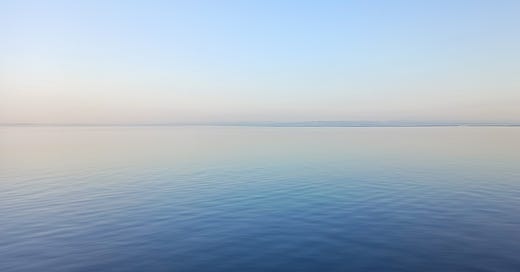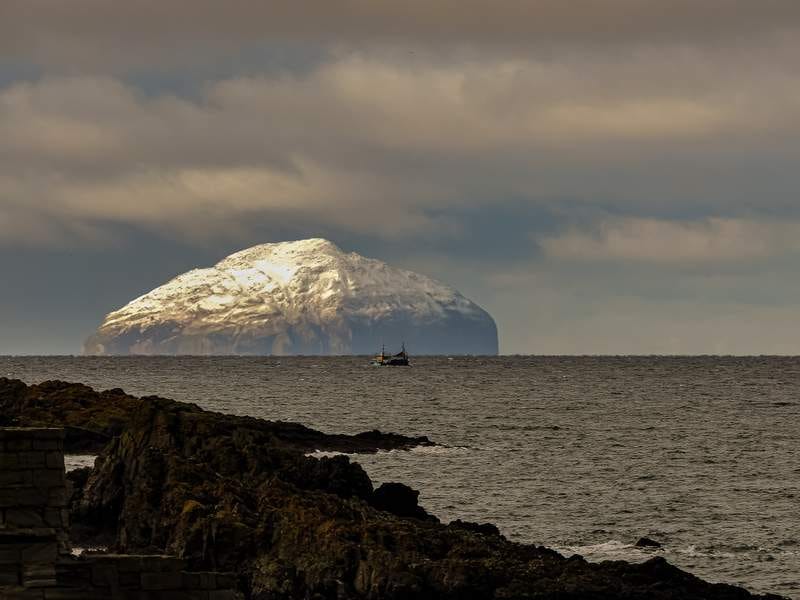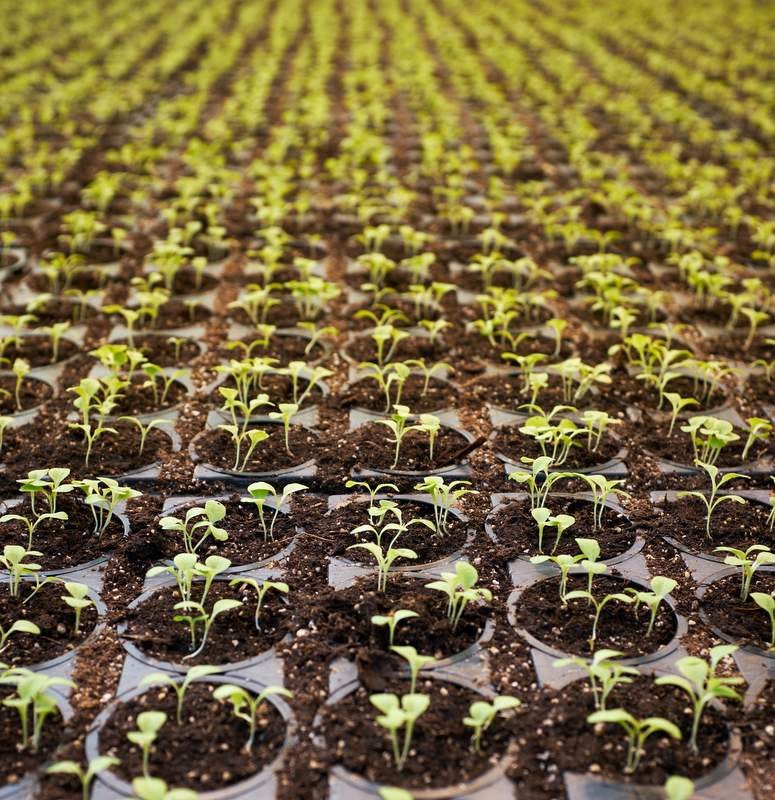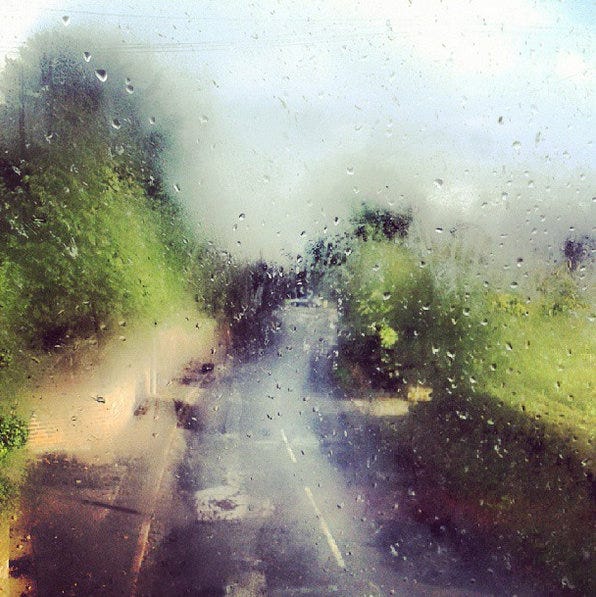Hello! This is Everything Is Amazing - and that lot right there was what we covered in Season 5.
In a second, a few details about what’s next for this newsletter.
(Wait - you are subscribed, aren’t you?)
But first, a weird thing: remember that 98.1% reflective white paint I mentioned in my piece that wrapped up our look at the science of colours? A little later on the same day I published it, the New York Times ran this…
…which contains the following stop-you-dead-in-your-tracks quote:
“He calculated that if materials such as Purdue’s ultra-white paint were to coat between 1 percent and 2 percent of the Earth’s surface, slightly more than half the size of the Sahara, the planet would no longer absorb more heat than it was emitting, and global temperatures would stop rising.”
Um…I certainly have plenty of questions, and this measure seems impractical to say the least (how much paint is that? How many trillions of gallons?), but as a raw indicator of the power of these kinds of new coatings, it’s deeply impressive.
(Hat-tip to Will Dowd for this, author of the completely superb Lunar Dispatch on Substack, the last edition of which was the best thing I’ve read all month.)
Okay! As promised, here’s a wee glimpse at season 6 of this newsletter.
I have a question for you to try to answer off the top of your head: how many people live on all the islands in the world, combined?
Type this into Google, and you’ll get answers ranging from 500 to 750 million. But surely if an island is defined as “a body of land surrounded by water,” as it technically is - well, don’t we all live on islands?
I don’t think I realised until recently how utterly arbitrary the dividing-line between “island” and “continent” is. Why is Australia - surely the most island-like of landmasses - regarded as a continent, while Greenland, with its 2+ million square kilometres, is still called an island? At what point between the sizes of those two places does the label flip over?
(Geology points to a few recurring differences between continents and islands, but even those aren’t hard & fast.)
When even the definition of a thing doesn’t stand scrutiny, you know there’s a lot of fascinating details to discover - which makes it even more baffling that, in the second year of my Archaeology degree, I passed on taking a term-long module about island archaeology. Ten full weeks, nerding out about how prehistoric humans lived on islands. Why, Mike, you bloody fool? Why?
It would have introduced me to the biogeography of them, the ways humans have made homes on even the smallest and most resource-depleted of them, the way some have now disappeared under the waves (like Doggerland!) and new ones are popping up all the time, the way they affect wind and ocean currents and local weather in surprising or downright bizarre ways, the way they affect us, the way that ancient people (and, to be fair, not so ancient ones) used the seas as super-highways, turning islands from their stereotypes as middle-of-nowhere places into the most powerfully connected places on the planet…
I’ve been kicking myself for twenty years now. I’ve always wanted a good excuse to go back and nerd around until I could consider myself educated in the basics.
So that’s what’s happening in season 6. The main theme is the science of islands - and I’m going to pass along to you the highlights of everything I learn along the way.
But it’s also going to be about the experience of them too.
I’m currently living on a stretch of coast with well over a hundred islands, comprising the Inner Hebrides, the Outer Hebrides, the isolated scatter that don’t belong to either, and further afield to the north, the archipelago of Orkney which never stop calling to me - plus some truly bizarre outliers like Ailsa Craig (pictured above) on my horizon here in the Firth of Clyde, or the inaccessible granite fleck of utter nothingness hundreds of miles into the Atlantic called Rockall, which Britain annexed because it was afraid the Russians would build a radar installation on it. (More on that soon.)
This will therefore be a series occasionally written and recorded on location, letting me flex my enfeebled travel-writer muscles a bit as I go. I’ve been looking for a good/flimsy excuse to go island-exploring for a while, so I’m grabbing this one with both hands. If I don’t get sucked down Corryvreckan or savaged to perdition by homicidal seabirds or midges, it should definitely be a fun ride!
(That’s the main theme. But like this just-ended season, I’m running a second season-long theme, just for paid subscribers. More on that next time.)
Here’s something else that’s new for season 6.
This newsletter’s been growing quickly over the last year - there are just under 18,500 of you reading today - and with that growth has come a realisation that strikes a dagger of icy fear into my heart:
Some people will now be thinking I genuinely know stuff.
To be clear, there aren’t that many - and certainly nobody who actually knows me in real life thinks this.
But it’s a natural consequence of having a highly visible online presence to be regarded as "an “authority”, whatever that means - and it holds the door open for imposter syndrome to stroll in, sit down, put its muddy feet up on your kitchen table, light a cigarette and drawl, “okay bud, here’s how crappy you’re going to feel from now on, whether you like it or not.”
But I reckon there’s a way around this, and since I started Everything Is Amazing I’ve been careful to follow it, and share the principle of it with other people as often as I can. I did so in Substack’s weekly Office Hours discussion last week, and on Substack Notes later the same day - and I’m doing it again here, right now:
A tip for battling imposter syndrome:
You know the oft-repeated bit of advice about "writing what you know"? It's wrong - or at least, it's highly misleading, and leads to a lot of misery and paralyzing self-doubt.
What it seems to say (and pretty much everyone reads it this way) is "IF YOU'RE NOT A PROPER EXPERT, WHY ARE YOU EVEN TALKING, STEP AWAY, YOU TIMEWASTING LOUDMOUTH."
This leaves the door wide open to the kind of internal imposter syndrome that can have you staring at a flashing cursor for days - even weeks - as the fear of saying something wrong plays merry havoc with your nervous system.
So here's a better bit of advice: WRITE WHAT YOU WANT TO LEARN.
There's good science on the power of doing this. [That’s by Annie Murphy Paul, who is also on Substack these days.] It will help you learn better, remember things better and be more creatively curious. But it will also protect you from imposter syndrome, because it's admitting that you may get stuff wrong as you go along. Because of course you will. You're a student!
(The trick is to be open to being corrected - which is a great way to build trust and engagement in readers, because if they see you're humble enough to be publicly corrected and own up to your mistakes, they will consider your voice a more credible presence in their Inboxes.)
The other thing about this is - it lets you invite your readers on a journey with you. A journey of learning. You're guiding them, but you're learning alongside them. That is a really compelling value proposition in a newsletter.
So: write what you want to learn, whether it's something you already know something about, or it's something you're learning from scratch. You don't need to be a world authority. No student ever is. You just need to share the excitement of learning something you're both interested in.
Try it!”
I really believe in this approach, and I’m going to continue to bake it into everything I write for Everything Is Amazing - including the times when I get things wrong because my readers are much smarter than I am, and have to display all the egg on my face and ask for forgiveness.
But I also reckon I could be a bit more actively helpful, in the way I was being when I worked as a storytelling consultant. How can I best help you chase your curiosity in a more exciting, excitable way?
One thing I can’t do is any more long-term consultancy work in the way I used to do it, the kind that involved weeks or months of work. Reason being: I’m researching and writing this newsletter! It’s my almost-everything. That’s where my creative focus is, and that’s not changing anytime soon. (And I’m already way behind with a few things.)
But I can do a little more - so here it is.
When I wrote “Don’t Start A Newsletter” a while back, I hoped there were lots of you with deeply nerdy interests that you’d love to find a way to tap into, in front of an audience or in private. Then I ran the two discussion threads on what you wish other people were more curious about and what your nerdiest year would look like, and they both blew up in a way I wasn’t expecting - and it became clear you’re all way more interesting (and interested) than I’ll ever be.
So - how about you actually go for it? How about putting a little time aside each week, and giving yourself a year to chase the specific subject of your curiosity as hard and as far as you want it to go, with all the joy of an eternal student, just to see where it will take you?
I’m calling this challenge ‘YOUR CURIOUS YEAR’ - and it starts anytime you want.
For obvious reasons - and glugging back a certain amount of Kool-Aid here - I can thoroughly recommend starting a Substack newsletter to help you do this. I gather that other newsletter-like platforms are great (as long as they’re not run by Meta or Twitter), but this is the one I know, and it’s entirely free to get started on, so I’m recommending it to you.
If you accept this potentially life-changing challenge (seriously, it changed my life), then I’ll have a couple of newsletters within the upcoming season 6 of EiA to help you along.
But if you want an extra push in the direction of that curious obsession of yours, here it is:
If you’re an existing or new paid subscriber to Everything Is Amazing, you’ll now get the option of what the marketing folk call a “1-to-1” with me, either as a Zoom or Skype (or phone) call, or a few emails bounced back and forth - tailored to helping you do what you’re doing, or get the word out about it, or whatever would help. You ask me questions, I fling a bunch of ideas at you, you pick one or two that might work for you, and off you go to discover how deep your personal rabbit-hole goes.
I’ll get the first bunch of these 1-to-1s set up after next weekend, and everyone with a paid subscription will get details on how to sign up to them.
Oh, To See, To Truly See
Hello! Firstly, thank you thank you thank you for signing up to Everything Is Amazing. Whatever happens with it, I’m making this project my focus for the rest of the year - but it’s really gratifying to see how many of you have signed up. Mad thanks, truly.
Speaking of which: it’s now been two and a half years since I started Everything Is Amazing, with the above newsletter.
Honestly, I had no idea if anyone would care about these kinds of rambling, science-led stories of awe and wonder, written by a well-meaning buffoon like me. I had more than a few moments when I thought this whole thing would just fizzle away. I really didn’t know people would care.
But I certainly knew I cared. Those “woah!” moments when I’m reading someone else’s work - that’s what lights me up as a reader, and during 2019, when I took a year off from writing to try to reawaken my ability to be curious and interested and hopeful again (I told the full story to Valorie Clark here) - well, that’s what pulled me out of a very deep emotional hole, and gave my dreams of being a professional writer the second chance they desperately needed.
So in one sense, everything right now is incredibly welcome, and I’m pinching myself, and taking it as a mandate to show up with my very best work and help as many folk as I can with it. Thanks to just over 400 paid supporters of this project, it’s sustainable. I can now keep going, and it’s my fulltime job, and I am floored about this. I’m grateful, I’m lucky, and I’m ready to give the next season everything I’ve got.
But in another sense - I still need to grow it a little further.
The current scope of Everything Is Amazing is limited by its budget, which is still of the shoestring variety. I’m now able to keep going, but I still can’t do the most adventurous, most out-in-the-world version of the newsletter. The one where I’m travelling around interviewing people, and doing some first-person investigative stuff, and reporting & recording from where the stories actually are.
A couple of hundred new paid subscribers would get me over that line, and unlock the fullest, most reckless version of this thing.
Would you help me do this? Have you enjoyed this newsletter, and think it’s worth supporting? Is there anything since you signed up where you thought, “you know, I actually look forward to this thing”? Do you want to see the FULL version of it, the one that’s been in my head for years, where I go out and make a TOTAL idiot of myself?
I’d love your help to make this a reality.
This week, until the end of Friday, all paid subscriptions are 20% off - and that’s recurring, for as long as you stay signed up:
Thanks so much for making this whole project the most thrilling and rewarding part of my career to date. What a thing it’s becoming.
- Mike
Images: Diego; Andrej Lišakov; Mike Sowden.










Just an aside to say that, though I sometimes find Substack overwhelming, it’s a reminder of how interesting people can be. Not just the famous people with lots of followers and a robust Notes presence, but really anybody. So I appreciate what I am interpreting as your egalitarian bent to help others indulge in and share their curiosity. And your island plan sounds very cool.
I’m aging, and some things I enjoy doing, like Pickleball and fly fishing, have become difficult for me to continue doing. I’m always looking for new things to occupy my time. “Write what you want to learn” is a great idea, thanks I’ll give it a try.